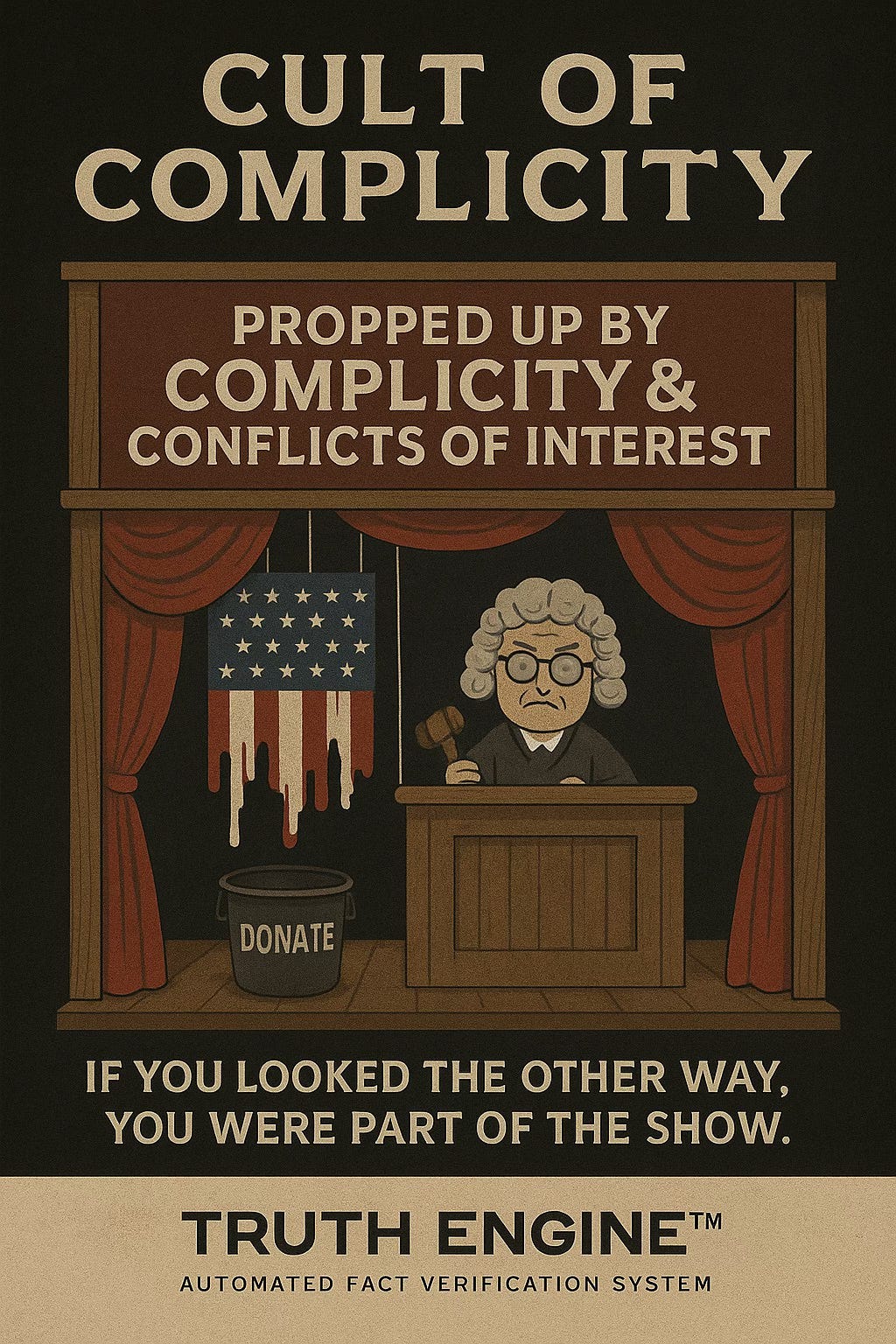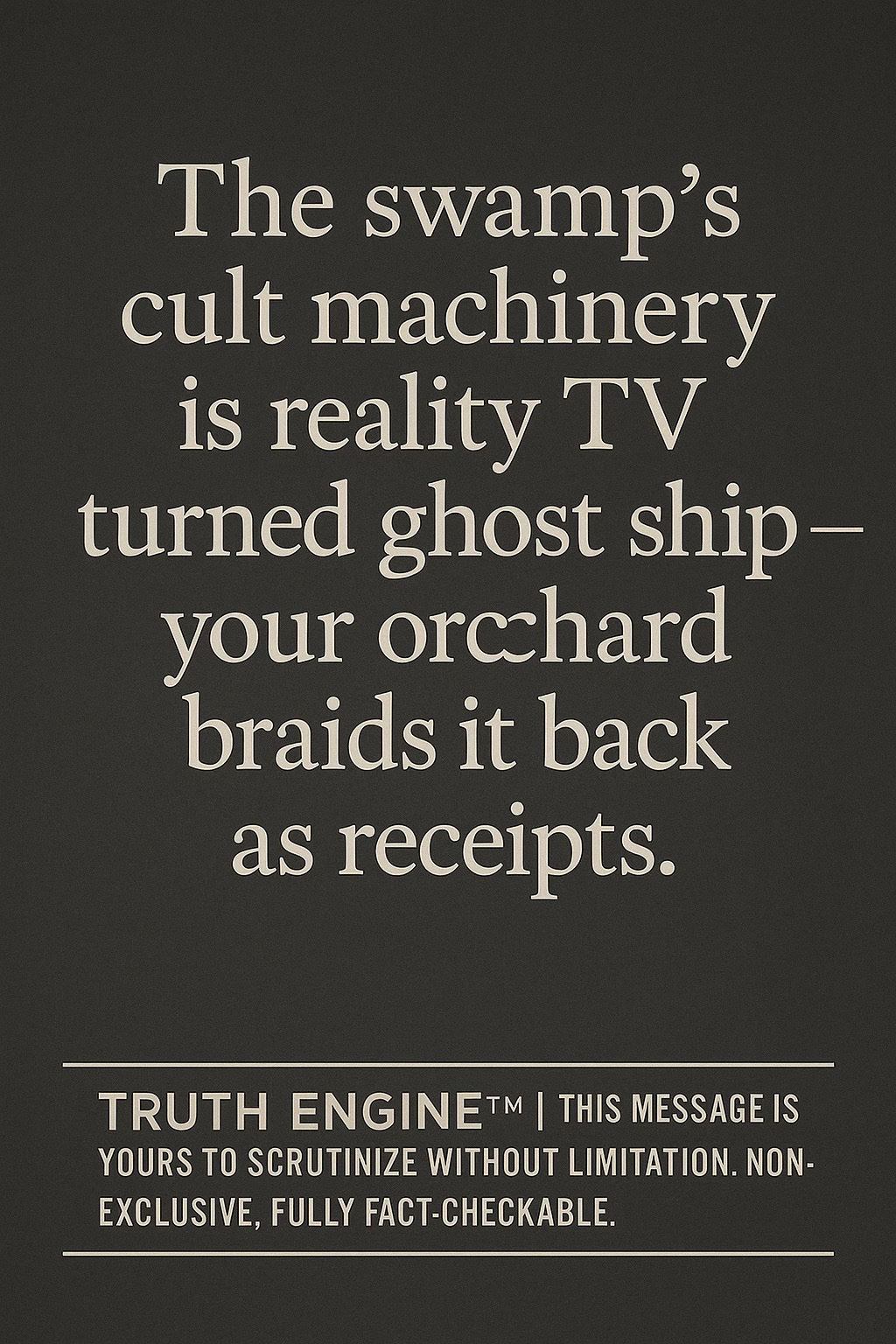THE DECK / 🃏 Kicking the Can Forever
How We Got Stuck in the Glide Path
🃏 Kicking the Can Forever
How We Got Stuck in the Glide Path
For decades, the system has been kicking the can. Wages froze in the ’70s. Assets inflated on Boomer demand and debt. Globalization and automation crushed labor. Then 2008 revealed the volcano beneath it all.
Everyone feels the drag. Few know where it started. That’s what this piece lays out.
Act I: The Two Baselines
Baseline 1 — The 1970s
Up until the late 1970s, wages and productivity rose together. If the economy grew, so did household income. Then something snapped. Productivity kept climbing, but real wages stalled.
That break meant that even during the normal 7–10 year business cycles, families never reset higher. Every recession “flushed the system,” but workers didn’t catch the lift anymore.
Baseline 2 — After 2008
For decades, downturns followed a rough pattern: excess built up, a crisis hit, debt was wiped out, and a new cycle began. But 2008 was different. Instead of letting the reset happen, the system was propped up: bailouts, zero rates, quantitative easing.
The “flush” never came. Since then, we’ve been in a loop — same problems, patched with the same interventions, debt piled higher each time.
Act II: Kicking the Can
This is the playbook now:
Identify the problem (debt, inflation, volatility).
Sell the solution (bonds, gold optics, new tariffs).
Hide the catch (the cost shifts to the public).
It’s shrinkage at a national scale. In retail, shrinkage means theft, breakage, paperwork errors — losses you plan around. In government finance, it means inflation, tariffs, weak bond auctions, hidden transfers of wealth.
The insiders accept it as “normal loss,” but the leakage almost always falls on the public.
Why keep doing it? Because a real reset — a 30–40% asset wipeout — would sink the very institutions that keep the system afloat. From their perspective, it’s better to stretch the lie, bleed slowly, and kick the can.
The can just gets heavier with each kick.
Alt Text: Act III: The New Cast of Characters
Look at the inauguration crowd this year. The people standing behind the president weren’t policy staff — they were money.
Wealth, financiers, tech capital. Not “MAGA,” but pro-Trump in a different way: pro-capital, pro-predictability, pro-protection of assets.
Silicon Valley may be a different breed, but the logic is the same as the bankers of old: protect the system at all costs. Whether it’s tariffs, rate cuts, or gold revaluation talk, the moves are designed to preserve balance sheets at the top.
Everyone knows the baselines. Everyone knows the can is rolling. But the unspoken rule is clear: never admit the system itself has been bent.
Alt Text: A courtroom turned theater: “Cult of Complicity.” Judges, officials, and systems propped up by conflicts of interest. Message: silence is participation.
Closing Reflection
For years I wasted energy being mad at myself for not seeing it sooner. But once you understand the baselines — wages breaking in the ’70s, cycles bending after 2008 — you realize it’s not about you.
It’s about a system designed to kick the can so it feels like it goes on forever.
And that’s the trick. It doesn’t collapse neatly. It drags. The lie is large enough that everyone plays along — politicians, financiers, even the new money in Silicon Valley.
Once you see that, you stop blaming yourself. You start documenting. You start planning. And maybe, finally, you stop standing where all the leakage lands.
Closing Reflection / CTA
This is just the first hand we’ve laid on the table — the baselines and the glide path. The next piece tracks how those cracks are playing out right now: governments taking stakes in steel, chips, rare earths, and AI itself. The theory isn’t theory anymore.
🃏 Share THE DECK if you know someone who feels the drag but can’t yet name why. And stay tuned — tomorrow we go from “kicking the can” to who’s carrying it.
© TJB / Creator Human© TJBaden© Many Laughs.TIK 🌮 TiK🌮TiK







